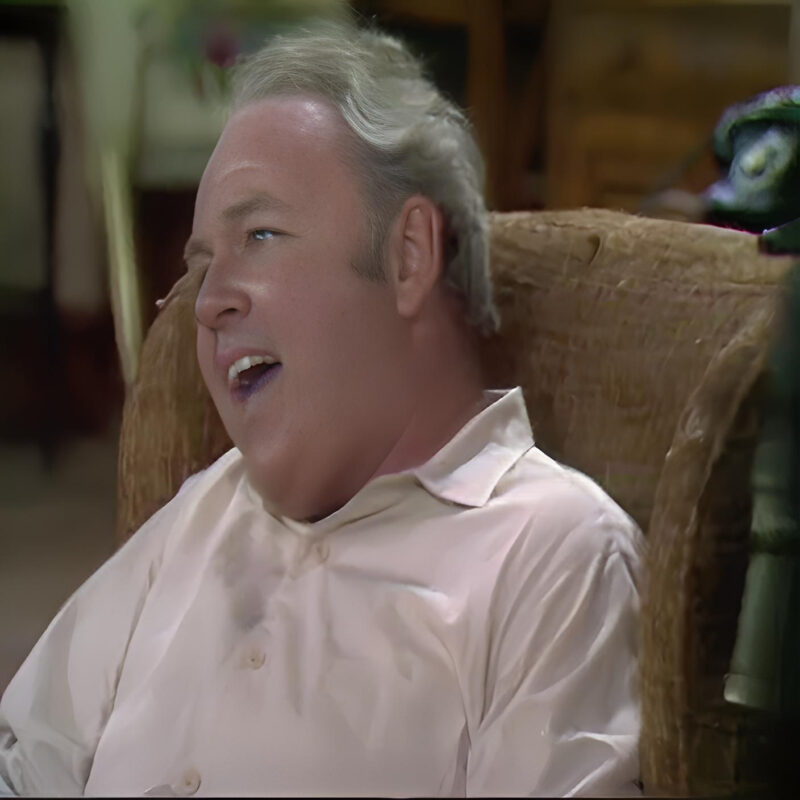
“All in the Family” stands as a monumental piece of television history, hailed as one of the greatest and most controversial programs ever produced in the United States. Archie and Edith Bunker have become as iconic as apple pie and The Statue of Liberty, their characters etched into the American cultural landscape. Yet, even as a devoted fan, I can’t help but notice a few aspects of the show that didn’t quite add up. As we commemorate the tenth anniversary of Carroll O’Connor’s passing and celebrate the 89th birthday of creator Norman Lear, here are some mild grievances about this beloved show.
Archie’s Political Affiliation
Archie Bunker was portrayed as a staunch Republican, praising Presidents Richard Nixon and Ronald Reagan. While it’s true that many white working-class men in the Northeast supported Nixon, most identified as Democrats, especially union members like Archie. These men typically voted Democrat in local elections and wouldn’t label themselves explicitly as Republicans.
Archie’s Ethnicity
Archie was depicted as a White Anglo-Saxon Protestant (WASP), yet blue-collar Queens, New York, in the 1960s and 70s was predominantly Irish, Italian, and Polish Catholic. Archie, given his background, might have been more authentically portrayed as an Irish Catholic, like O’Connor himself. However, making Archie a WASP allowed the show to critique the Catholic Church and the Irish.
Edith’s Attitudes
Jean Stapleton’s Edith Bunker was a paragon of acceptance, warmly embracing her hippie son-in-law Mike and their black neighbors, the Jeffersons. Given that Edith grew up in the same environment as Archie, it’s hard to believe she wouldn’t share some of his prejudices. Dramatic license required Edith to be Archie’s moral opposite, and a bigoted Edith wouldn’t have resonated well with viewers.
Black Family Moving In
It was improbable for a black family to move into a neighborhood like the Bunkers’ during that era. While the show explored Archie’s apprehensions about black neighbors, the Jeffersons faced little resistance settling into Hauser Street, which wasn’t entirely realistic for the time.
Addressing Drug Culture
The show largely sidestepped the drug culture prevalent during its run. Although drugs were occasionally referenced, they weren’t a central topic. Given Mike’s hippie persona, it’s plausible he might have experimented with drugs, but this was never explored.
The ‘Sammy’ Episode
One of the most memorable episodes featured Sammy Davis Jr. visiting the Bunkers. While the episode cleverly tackled Archie’s selective racism, Sammy Davis Jr. was a contentious figure in the black community by 1972, partly due to his support for Nixon. It’s unlikely that young characters like Mike, Gloria, and Lionel Jefferson would be so excited to meet him.
The Show Ran Too Long
Like many successful shows, “All in the Family” might have overstayed its welcome. Running from 1971 to 1979, with the successor “Archie Bunker’s Place” continuing for a few more years, the show’s magic began to fade by 1976. Without Nixon, Vietnam, and Watergate, the core conflict between Archie and Mike felt increasingly forced and stale. The first four seasons were exceptional, but by the fifth, the writing had noticeably declined.
Conclusion
“All in the Family” remains a groundbreaking and deeply influential show, despite its quirks and inconsistencies. It tackled serious social issues with humor and heart, leaving an indelible mark on television history. As we honor the legacies of Carroll O’Connor and Norman Lear, it’s worth remembering both the brilliance and the imperfections that made the show a cultural phenomenon.
